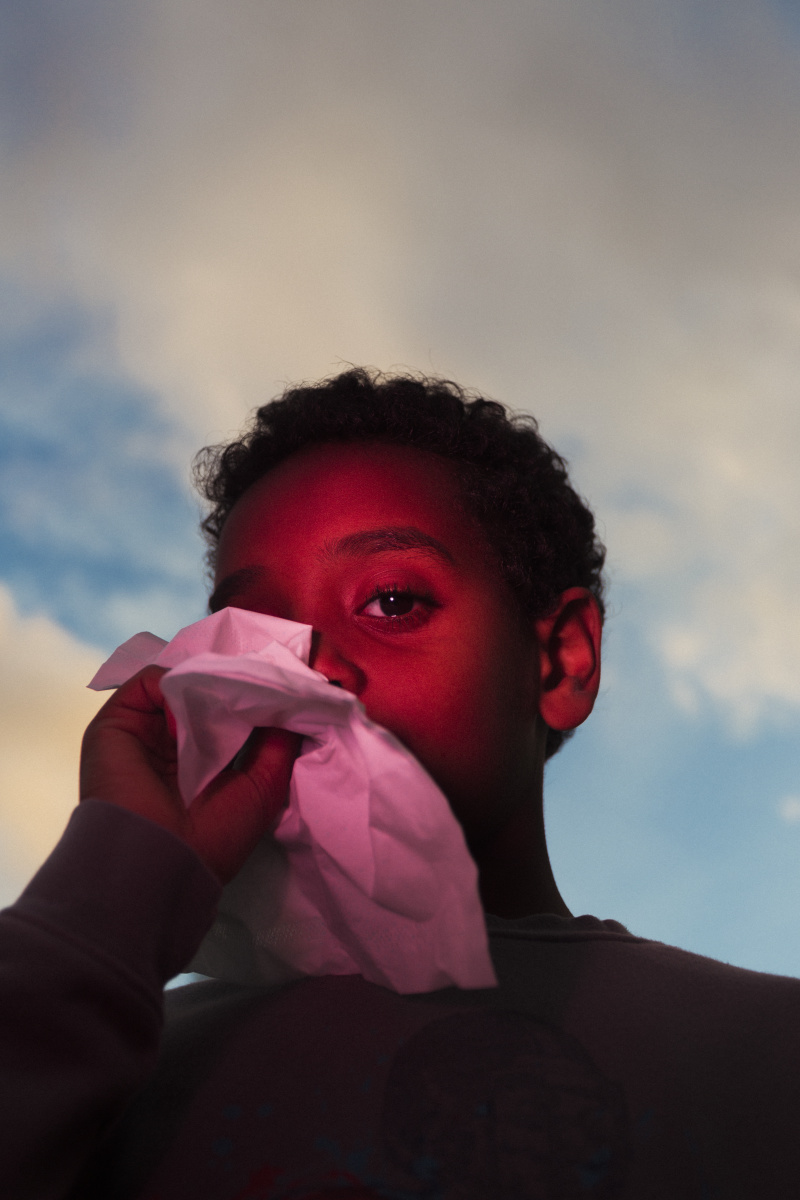- Open today, noon to 5 pm.
- Parking & Directions
- Free Admission
The Chrysler Museum of Art Presents Contemporary Works by Photographer and Director Dawit N.M.
FOR IMMEDIATE RELEASE

Dawit N.M. (Ethiopian, b. 1996), Adam’s Eye, Virginia Beach, Virginia, 2017, Archival inkjet print, Courtesy of the artist
NORFOLK, VA. (June 22, 2020) – Photographer and Director Dawit N.M.’s story has many beginnings, including his early years in Ethiopia, his family’s move to Hampton Roads and his discovery of film and photography. The internationally acclaimed artist presents his first-ever museum exhibition at the Chrysler Museum of Art on view through Aug. 16, 2020. The Eye That Follows: Photographs by Dawit N.M. weaves the threads of his life together through images made in Hampton Roads, New York and Ethiopia as well as music videos and short films produced around the world. The works are personal, but the themes are universal, including family, community and diasporic cultures. “My fascination with the commonality of the human experience and the emotions that we decide to embrace or deny produces a consistent backdrop for my work,” says Dawit N.M.
Born in Ethiopia, Dawit moved to Hampton Roads with his mother when he was 6 years old to reconnect with his father, who was in the U.S. Navy. Boredom during a snowstorm sparked Dawit’s interest in film through video games. The then ninth-grader taught himself the craft and committed to a career in filmmaking. He would later come to still photography, a media he had previously disregarded, while attending Old Dominion University and working for the campus newspaper. When his father suffered a stroke, Dawit turned to his newfound interest to understand his father’s illness, eventually launching a long-term project that included components from Hampton Roads and took him to Ethiopia, New York and Los Angeles.
The narrative of Dawit’s creative growth is dotted with imagery that suggests impediments to vision: a childhood eye infection that left him temporarily blind, whiteout snowstorms and hazy clouds, curtains that adorn the sanctuary of his Ethiopian Orthodox Church, the veils worn by women churchgoers and the immobility caused by his father’s illness.
“Among other things, the title of the show refers to the way Dawit focuses on these moments of unseeing and invisibility with a clarity that verges on foresight,” says Seth Feman, Ph.D., Deputy Director for Art & Interpretation and Curator of Photography. “Eyes peering back at the camera from strangers encountered on the street, from between two out-of-focus human forms or from beneath a pile of rocks, suggest that The Eye That Follows is an exchange of glances that moves between Dawit and all those he films, weaving together a community from the immaterial space of these relationships.”
The exhibition opens with a series of photographs of Dawit’s immediate family, including a weather-damaged photograph of his father, in which cracking obscures his eyes; a portrait of his mother, likely looking into the camera but shrouded in such darkness that she is almost invisible; and portraits of his siblings who make direct eye contact with the lens. The exhibition then incorporates works from throughout Dawit’s dawning career, including images made in New York, Hampton Roads and Ethiopia during a visit with his father.
“One work from Dawit’s travels depicts two little girls with matching pink hoodies pulled over their faces,” says Feman. “The work was part of a series called Don’t Make Me Look Like the Kids On TV, which epitomizes much of Dawit’s overarching project, namely a contemporary meditation on seeing and not seeing, self-presentation and stereotype, movement and immobility and loss and devotion.”
The exhibition also includes a series of music videos and short films Dawit made in collaboration with musician Mereba. “I genuinely believe in Mereba, and I second everything she has to say in her music,” says Dawit. “Collaborating with her has been a treat and, in many ways, destined to happen. The most significant advantage we have in working together is our communication. We talk and we share until we get to the point that we both feel comfortable.”
Because Dawit was raised in Hampton Roads, it is fitting for the Chrysler to present his first museum exhibition. “The Chrysler is the first museum I went to when I came to America. It’s the first place that demonstrated the importance of art and the archive of culture to me at such a young age,” says Dawit.
ABOUT THE CHRYSLER MUSEUM OF ART
The Chrysler Museum of Art is one of America’s most distinguished mid-sized art museums, with a nationally recognized collection of more than 30,000 objects, including one of the great glass collections in America. The core of the Chrysler’s collection comes from Walter P. Chrysler, Jr., an avid art collector who donated thousands of objects from his private collection to the Museum. The Museum, expanded in 2014 to add additional gallery spaces and amenities for visitors, now has growing collections in many areas and mounts an ambitious schedule of visiting exhibitions and educational programs each season. The Chrysler has also been recognized nationally for its unique commitment to hospitality with its innovative gallery host program.
The Perry Glass Studio is a state-of-the-art facility on the Museum’s campus. The studio offers programming for aspiring and master artists alike in a variety of processes including glassblowing, fusing, flameworking, coldworking and neon. The studio has also cultivated a reputation for its cutting-edge performance evenings, and was the host venue of the 2017 Glass Arts Society Conference.
In addition, the Chrysler Museum of Art administers the Moses Myers House, a historic house in downtown Norfolk, and the Jean Outland Chrysler Library. General admission is free at all venues. For more information on the Chrysler Museum of Art, visit chrysler.org.
###
For more information, interview assistance, or a high-resolution image suitable for publication, please contact Amber Kennedy at The Meridian Group at (757) 340-7425 or Amber@themeridiangroup.com.

